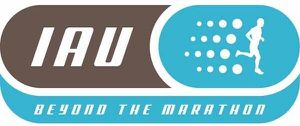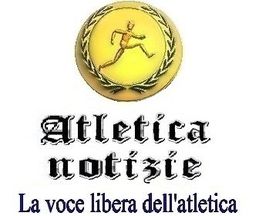(Maurizio Crispi) Nel 1928, negli Stati Uniti, si svolse la 1^ edizione della Trans-American Footrace, una delle prime ultramaratone a tappe ad inuagurare il XX secolo.
Si trattava di attraversare da costa a costa gli Stati Uniti, partendo dalla California per giungere a New York sulla East Coast (punto di arrivo il Madison Square Garden), con un transito da Chicago.
La gara ebbe inizio il 3 marzo del 1928 da Los Angeles (Ascott Speedway), California.
L'evento, promosso da un certo Charles C. Pyle - il primo organizzatore di eventi sportivi di quei tempi - ebbe un grande successo, attraendo un vasto numero di partecipanti, quando anche se oggi nel proprorre un'impresa del genere sarebbe arduo raccogliere qualche decina scarsa di runner.
Ma c'era un motivo per questa numerosa partecipazione.
Per il vincitore era previsto un importante premio in denaro.
E quelli erano gli anni della Grande Depressione, sicché non c'era molto lavoro e non c'era molto denaro.
Fu così che molti si inscrissero attratti dal miraggio del premio in denaro, così come molti "disperati" proprio in quegli anni si iscrivevano alle cosidette "maratone di ballo", in cui coppie di ballerini dovevano ballare sino allo sfinimento per giorni e giorni, in una competizione ad eliminazione fisica, salvo poi scoprire che ilpremio in denaro promesso era sostanziosamente decurtato di tutte le bevute e i ristori che i ballerini avevano creduto gratuiti (una storia ispirata a questi fatti è raccontata magistralmente in un romanzo e in un film, entrambi con lo stesso titolo "Non si uccidono così anche i cavalli?").
Nella Trans-American FootRace, i concorrenti avevano davanti a sè un percorso di più di 3423,5 miglia e furono 199 gli atleti che lasciarono Los Angeles con il miraggio della pentola piena d'oro alla fine della loro fatica.
Ci vollero 84 giorni perchè il primo atleta tagliasse il traguardo a New York: su 199 soltanto in 55 furono i finisher, con una selezione dunque fortissima, considerando che ben settanta dei corridori abbandonarono dopo il primo giorno di gara.
Andy Payne fu il vincitore in 573h04'34"
La garà venne denominata the "Great Bunion Derby (or Race)", a causa delle vesciche e della callosità che provocò nei piedi dei partecipanti che allora utilizzavano scarpette da corsa scomode e poco protettive, lontane anni luce dalle scarpette tecniche dei nostri tempi.
Un certo Harry Abrams, che era arrivato in 11^ posizione, ripetè la stessa prova - ma viaggiando in senso opposto - nel 1929 (dove arrivò 9°), divenendo così il primo e, posibilmente, anche l'unico atleta ad aver corso per due volte attraverso il continente nordamericano.
Ricordiamo qui che, ad entrambi le edizioni, prese parte - con una forte impronta patriottica ,il triestino Giusto Umek, uno dei marciatori italiani più quotati del tempo, grazie ad una sponsorizzazione della Fernet Branca. Poichè la gara contemplava dei premi in denaro, venne considerata una competizione "professionistica" e Giusto Umek, con una decisione che fece scalpore, venne radiato dalla possibilità di partecipare agli sport competitivi puri e, dunque, perse la possibilità di potere poter partecipare ai giochi olimpici(1).
La competizione venne ripetuta soltanto nel 1929, procedendo questa volta da New York a Los Angeles, e poi basta.
Classifiche finali delle due traversate degli Stati Uniti nel 1928 e nel 1929
| Atleta/nazionalità/premio (1928) | Atleta/nazionalità/premio (1929) |
| 1. Andrew Payne (USA) 25000$ | 1. John Salo (FIN/USA) 25000$ |
| 2. John Salo (FIN/USA) 10000$ | 2. Peter Gavuzzi (GB/ITA) 10000$ |
| 3. Philip Granville (CAN) 5000$ | 3. Giusto Umek (ITA) 6500$ |
| 4. Mike Joyce (USA) 2500$ | 4. Sam Richman (USA) 3500$ |
| 4. Giusto Umek (ITA) 1000$ | 5. Paul Simpson (USA) 2500$ |
| 6. William Kerr (USA) 1000$ | 6. Philip Granville (CAN) 2250$ |
| 7. Louis Perrella (USA/ITA) 1000$ | 7. M.B. Mc Namara (AUSL) 2000$ |
| 8. Eddie Gardner (USA) 1000$ | 8. Herbert Hedeman (USA) 1750$ |
Con tanti partecipanti alla prima edizione (almeno nelle sue fasi iniziali) lo sforzo logistico fu non indifferente, considerando i distacchi tra un concorrente e l'altro e i necessari tempi di attesa.
Molti degli atleti partecipanti erano seguiti individualmente da assistenti che viaggiavano in bici, in motocicletta, in auto primordiali e, forse, anche a cavallo.
Anche a causa di ciò, la gara sviluppò un formidale "indotto" nell'attività di artigiani e riparatori vari sparsi lungo tutto il percorso nelle diverse cittadine che venivano attraversate mentre si viaggiava da ovest ad est: proprio per la manuntenzione e la riparazione di questi mezzi di supporto.
E, ovviamente, "The Great Bunion Race" produsse una grande movimentazione da parte degli scommettitori, poichè vi era terreno fertile per ogni sorta di scommesse, e, diversamente da quanto accade oggi per le imprese di ultramaratona, ebbe proprio per questo motivo una grande risonanza nella stampa nazionale degli USA, ma anche estera, con un cospicuo numero di giornalisti al seguito che, giornalmente inviavano le loro cronache e i loro resoconti.
In questo senso, la Trans-America FootRace, anche per i parametri dell'epoca, divenne un autentico evento mediatico.
Nel 1982, lo scrittore scozzese Tom McNab, scrisse pubblicò un bel romanzo dal titolo "Flanagan's Run" che appunto raccontava di una "Great Bunion Race", ipoteticamente avvenuta nel 1931.
Ovviamente nello scenario fittizio inventato da McNab (che tuttavia si inspira alla vera corsa, nelle sue due edizioni) sono ben 2000 gli atleti allo start e ilpremio in denaro ammonta addirittura a 150.000 dollari.
Il romanzo è molto interessante e ha avuto uno straordinario successo di vendite, ma - purtroppo - non è mai stato tradotto in Italiano.
I diritti di produzione cinematografica furono acquistati dalla Miramax Films, ma una riduzione per il cinema non è maii stata fatta, Peccato! Una qualche idea di quello che the Trans-American FootRace è stata le abbiamo guardando alcune sequenze del film "Forrest Gump", in cui l'omonimo protagonista, per dimenticare il dolore di un lutto subito, infila le sue scarpette di corsa e parter di corsa per attraversare di corsa gli Stati Uniti e lo fa, poi, per diverse volte di seguito senza mai fermarsi, divenendo nel frattempo - inconsapevolmente - una specie di santone-guru per una piccola folla di seguaci che procedono dietro di lui in attesa d'una sua parola sapienziale.
In tempi molto più recenti, ci sono stati dei tentativi - ma il più delle volte a titolo di impresa individuale - di fare rivivere la "Great Bunion Race".
- In 2011 ultrarunner Serge Girard planned a new edition running from Los Angeles to New York starting June 19 and lasting for 70 days.
- On May 20, 2012, ultrarunner John Pyle completed a run from San Francisco, CA to Key West FL. His run began on February 29, 2012.[2]
- On August 18, 2012 ultrarunner Jennifer Bradley of Britain became the second British woman to cross America but the first to run and make it in 80 days during the Run Across America on Trail 2012. Her trip started May 31, 2012 at Twin Harbors State Park in Washington and she was on the trail 720 hours 26.7 minutes.
- Also on August 18, 2012 ultrarunner Mike Samuelson of Tennessee completed the same Run Across America on Trail 2012 of 3303 miles at Cape Henlopen State Park in Delaware on a journey that had started May 31, 2012 with 4 runners. He was on trail 719 hours 47.2 minutes.
Note (1) "Nel 1928 e 1929 Giusto Umek, uno dei nostri migliori marciatori, partecipò alla traversata degli Stati Uniti, una prova professionistica, denominata "Bunion Derby("= gara dei calli), con premi in denaro. In conseguenza di questo fatto l’atleta venne radiato dai ranghi dilettantistici dalla Fidal, con bocciatura della sua richiesta di essere reintegrato, emessa dalla Fidal con comunicato n. 4 della seduta del 6 dicembre 1934".
Vedi l'articolo esaurientissimo di Marco Martini, arricchito da foto d'epoca: " Umek: professionista o patriota? / Umek: «pro» or patriot?"
Per un maggiore approfondimento vedi quest'articolo comparso su Runners'World
The Great "Bunion Derby". Across the US on Foot in 1928 (Fonte: Runners'World) Opportunities for employment in 1927 were as slim on the West Coast as they had been in Oklahoma for 20-year-old Andy Payne. About to return home to the farm, the part-Cherokee Indian youth read in a California newspaper of the upcoming First Annual Transcontinental Footrace.
Organized by Charles C. Pyle, the nation's first sports agent, the race was to begin on March 3, 1928 in Los Angeles and finish near the end of May in New York City. The prize money offered was $48,500.
The contestant with the least elapsed time was to recieve the first prize of $25,000. The race would be run in laps, following Highway 66 from its Los Angeles starting point across Arizona, New Mexico, through Texas and Oklahoma. The runners would then pass over the Mississippi River at St. Louis. Then it was on to Chicago, across Indiana and Ohio, into Pennsylvania down New York State's Route 17, and into New Jersey for a brief period with a finish in New York City. Over 3,400 miles were to be covered in less than three months.
Support teams, vehicles for the press and a rolling shoe repair shop would be provided by the management. All race participants had to sleep in tents, and food was to be served in chow-line fashion at each day's designated checkpoint. Room and board would be offered gratis by Pyle, but there was to be an entry fee. America's first mobile radio station was going to issue daily reports on the race. There would be live interviews with the pedestrians.
C.C. "Cash and Carry" Pyle, a true showman in the P.T. Barnum tradition, planned on setting up a carnival at the end of each day's jaunt to take advantage of the local spectators who had been attracted by the "Bunion Derby." Local chambers of commerce would pay for the privilege of having the marathon stop in and continue from their respective towns and cities.
After each day's run, the hoofers could earn money by mingling with the spectators and selling the official race program - as well as their own personally autographed editions.
Pyle's first sports client had been Red Grange, football's "Galloping Ghost." Now out of professional football, Grange was to assist Pyle on the coast-to-coast marathon. In the anticipation of attracting an international field, Paavo Nurmi's trainer, Hugo Quist, had been employed to solicit Europe's finest long-distance runners and racewalkers to enter the event.
Andy Payne had run all of his life. Rather than ride horses to and from school as the other children did, Andy ran. Payne had competed in track while in high school, where he "always carried off the mile honors in the county meets."
The young Cherokee believed that this race was his opportunity. Payne said, "I want to clear the mortgage [on the family farm], and I can accomplish more in three months than it will take years to do otherwise. Think of the fame, too, it will bring us when I am declared winner of the greatest footrace in the history of the world."
So it was back to Claremore, Payne's hometown, to tell his parents of his plans and to secure financial backing from the local Chamber of Commerce. His parents did not want him to enter the coast-to-coast marathon but finally consented. As his father "Doc" later related, "this enthusiasm and determination to enter ruined a formerly good Oklahoma farmhand."
Andy began training in seclusion on the paved highways and unpaved roads of eastern Oklahoma. He trained to win - in rain, snow and on hills. He developed a running style that Doc later described as "a machine-like jog trot that keeps him moving but don't hurt him."
After several months Payne went to the Claremore Chamber of Commerce requesting their financial assistance. The youth was not taken seriously, but the members did donate $75. Doc Payne borrowed the rest needed to cover the entry fee and the money needed for shoes and other expenses on the road, including a trainer.
Andy then left for Los Angeles and in January 1928 was training in the hills of Hollywood. He ran 15-30 miles a day. Three weeks prior to the race Pyle had all of the participants living in tents, eating food prepared by his cooks and training together to prepare them for life on Highway 66.
As young Andy approached the starting line with 275 other runners and walkers on the afternoon of March 4, 1928, he had to be impressed with the quality of the field. Virtually every country in the world was represented.
Arthur F.H. Newton, a 44-year-old Englishman, was the consensus prerace favorite. He held all amateur running records from 29-100 miles. The San Jose Mercury reported that Newton "smoked regularly" and described his gait as "more shuffling than running style, developed during his 200-mile weeks. The man runs slowly on his heels."
Other foreign entrants included Olympic competitor Juri Lossman of Estonia and Nurmi's pick to win the race, fellow Finnish marathoner, Nestor Erickson. Quist was not as specific but felt a foreigner "would surely win." Canadian Phillip Granville and guisto Umek, representing Italy, were the foremost racewalkers to enter. Former long-distance champion Charles Hart, another Britisher, was the oldest entrant at 63. Some had even tabbed him as the most likely winner.
No American, other than Nicholas Quomawahu, a Hopi Indian from Arizona, was considered to have a chance to win the run. Other American hopefuls included: Willie Kolehmainen of New York, brother of Olympic star Hannes Kolehmainen; Ohio Finn Augustus Fager; Seth Gonzales, the "Denver Galloper"; and Harry Abramowitz, a Bronx walker.
None of the writers predicted Payne would finish in the money. But as Grange lit a bomb to start the Great Transcontinental Marathon, sending the harriers on their way, the Oklahoman had a plan: "Stay close, let the favorites burn themselves out."
The first hceckpoint was only 16 miles away in Puente. Kolehmainen described as the "sinewy 40-year-old Finn," won the initial leg. Newspaper accounts did not record where Andy finished.
Seventy seven dropped out after the first day. Among those callig it quits was Akron, Ohio, native Elton Haynes, who said he knew he "didn't stand a chance." His feet were aching and blistered, but he had landed a job and had become engaged to a woman he met while training in L.A.
On the second lap, a 35-mile treck to Bloomington, California, the hoofers experienced cold, rainy weather. Holehmainen broke the world's record for 35 miles by a few seconds but injured a "leg tendon" in the process.
The third day took the troop from Bloomington to Victorville, California, a torturous uphill desert hike of 44 miles through the San Bernardino Mountains. Three Finnish "stars" - Kolehmainen, Fager, and Erickson - took an early lead, but Kolehmainen soon dropped off pace and was forced to walk the last 32 miles due to the injured leg. Erickson won the lap in 6:47, beating the Hope Quonawahu. The Arizona Indian racer became the slapsed-time leader, replacing Kolehmainen in the process.
As the race left Bloomington and entered the Mojave Desert, Kolehmainen withdrew. Inaddition to the desert heat and wind, automobiles stirred up dust on unpaved highways, making it difficult to breathe. Rocky roads caused bruises. One contestant was struck by an automobile, another by a motorcycle.
So many of the runners developed foot problems that C. C. Pyle was nicknamed "Corns and Callouses," and the race became known as the "Bunion Derby."
After a week Newton had the lead with 145 runners still in the chase. Payne, in fourth place, trailed the leader by over three hours. Newton held the lead into the cold, windy northern Arizona mountains, but on the 15th day the race's biggest star quit the race because of a "sprained ankle and a strained leg."
Hart had recently withdrawn, and during the run to Flagstaff Quomawahu had suffered a race-ending ankle injury. Injuries were taking their toll. Only 102 contestants remained, and less than 400 miles had been run. None of the foreign stars were still in the field.
When Newton was forced from the marathon, Payne became the elapsed-time leader at 99:16:57. The next day the young Oklahoman developed a fever due to tonsillitis. One newspaper had him leaving the competition, but the youthful Cherokee persisted and wired home from Gallup, New Mexico on March 23, "Am feeling better. Will get back to my stride in a day or so." The illness cost Payne the lead, dropping him over three hours behind the new leader, Dr. Arne Souminen, a physician.
Reaching Amarillo, Texas, in early April, Payne had run his way back into the number-two spot. Souminen continued to lead with another unknown, Italian-born Englishman Peter Gavuzzi, in the number-three position.
Souminen soon succumbed to the rains, floods and winds of the Texas panhandle. Payne crossed into his home state at Texola as large crowds lined the highways to welcome Andy. In Oklahoma City the governor greeted the state's newest hero. As Andy Payne crossed Oklahoma, businesses closed, schools declared holidays, people attempted to run alongside him, and he was besieged with autography requests and gifts.
These distractions slowed Payne and by the time he reached Tulsa, he had lost his lead to Gavuzzi. But on the following day's jaunt into Claremore Andy led the pack, becoming the leader of the cross-country caravan once again. Will Rogers was among the throng that hailed its hometown hero. The Claremore Chamber of Commerce was not eager to lend their support to the ex-farmboy. Coincidentally, Claremore was approximately the halfway point in the Pyle marathon.
When the "Bunion Derby" left Oklahoma only 80 of the starters had survived. After dipping briefy into Kansas, the race moved across Missouri, where Gavuzzi again forged to the front with Payne dropping into the number-two position. The dwindling group of pedestrians crossed the Mississippi River into Illinois where traffic increasingly added to the runners' woes as more hoofers were struck by cars and motorcycles.
Gavuzzi, with the British flag sewn to his singlet, continued to increase his lead as the ran across the Midwest. Payne trailed by almost seven hours as the troops left Chicago with 1,000 miles remaining to be covered before they reached New York City. Sixty-five men continued.
On May 11 Gavuzzi was forced to quit the marathon due to infected teeth. The "brestle-bearded Britisher" had been picked up by a race patrol car 34 miles west of Fremont, Ohio, unable to continue. The New York Times quoted Gavuzzi: "Trouble with my teeth has kept me from eating anything but liquid for two weeks. I was so weak that I could not make any progress, so there was nothing to do but drop out." Andy Payne had outlasted another competitor. Oklahomans rejoiced. Their native son was once again at the top with an elapsed time of 444:48:05.
John Salo of Passaic, New Jersey moved into second place as he led the field from Wauseon, Ohio to Fremont, the 69th control station. An unemployed shipworker, Salo traversed the 64.7 miles in 8:58:42.
The marathon continued through Ohio, Pennsylvania and into New York State. Salo vainly attempted to overtake Payne. He knocked almost 90 minutes from Andy's lead by winning the Waverly to Deposit, New York, lap, covering the hilly 74.6 miles in 12:13:09, but the now-weary and wary Payne still led by almost 16 hours. With only four laps remaining and with victory in his grasp, the Oklahoman didn't want a misstep to deprive him of victory. Andy told a New York Times reporter, "Believe me, boy, I stepped that trip mighty cautious. Those miles seemed unending. The most maddening that I've covered so far."
Three days later and now 17 hours behind Payne, Salo won the Suffern to Passaic, New Jersey, Run. The town was "bedecked in holiday attire, a holiday for all but policemen and firemen" welcoming John into his hometown. The marathoner's efforts were even rewarded with a job. Passaic's Director of Public Safety swore Salo in as a policeman for an annual salary of $2,000.
More than 20,000 spectators watched as the 55 survivors left for the final lap into New York City. Andy was the winner by over 15 hours when the coast-to-coast marathon ended in Madison Square Garden on May 26, 1928. It took five pairs of rubber-soled canvas shoes to cover 3, 422.3 miles, in a total of 573 hours, four minutes and 34 seconds. The kid from Claremore was a national hero. His popularity in Oklahoma was so great that he threatened to displace Will Rogers as the state's favorite son.
The transcontinental run was not a financial success, but Pyle saw to it that the winners were paid. Payne got the $25,000 first prize. After being honored by Congress in Washington, he returned home to pay off the family farm mortgage and build a new family home. Andy invested most of the rest of his winnings in northeastern Oklahoma land. Since property values were declining, the investment was not a popular decision, particularly among those who had approached Payne with their own "get-rich-quick" schemes. Again Andy prove to be a winner when gas and oil were discovered on the newly purchased land.
Salo collected the $10,000 second prize. A year later he won the second C.C. Pyle Transcontinential Marathon. Financially it was a bust, and Pyle never paid the winners. Salo returned home to his post as a policeman in Passaic. Years later while on duty at a baseball game, he was fatally struck in the head by a line drive.
Andy retired from competitive running after the summer of 1928. He got married, worked as a newspaper editor for a while, and in 1934 won the office of Cleark of the Supreme Court of Oklahoma. For 38 years he held the same position. Shortly before his retirement in 1972, when asked about his philosophy, he said, "One can't be an athlete all his life, but he can use the same desire that made him. For clean living, For love of God and country."
Payne died suddenly in 1977, Oklahoma City still honors him each year with the Andy Payne Memorial Foot Races.
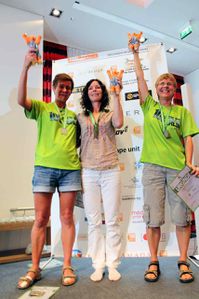 Annette Bahlcke e Peter Flock vincono la 100 Meilen Berlin (100 Miglia di Berlino) che si è svolta lo scorso 17 agosto 2013 e che si svolge su di un circuito che corrisponde al tracciato dell'ex-muro di Berlino. 223i partenti provenienti da diverse 18 nazioni, 174 i classificati al traguardo finale.
Annette Bahlcke e Peter Flock vincono la 100 Meilen Berlin (100 Miglia di Berlino) che si è svolta lo scorso 17 agosto 2013 e che si svolge su di un circuito che corrisponde al tracciato dell'ex-muro di Berlino. 223i partenti provenienti da diverse 18 nazioni, 174 i classificati al traguardo finale.





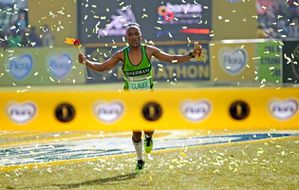





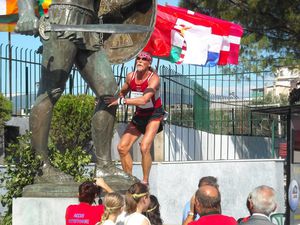



 Perchè ho dato alla mia pagina questo titolo?
Perchè ho dato alla mia pagina questo titolo? L'idea motrice di questo nuovo web site è scaturita da una pagina Facebook che ho
creato, con titolo simile ("
L'idea motrice di questo nuovo web site è scaturita da una pagina Facebook che ho
creato, con titolo simile ("
